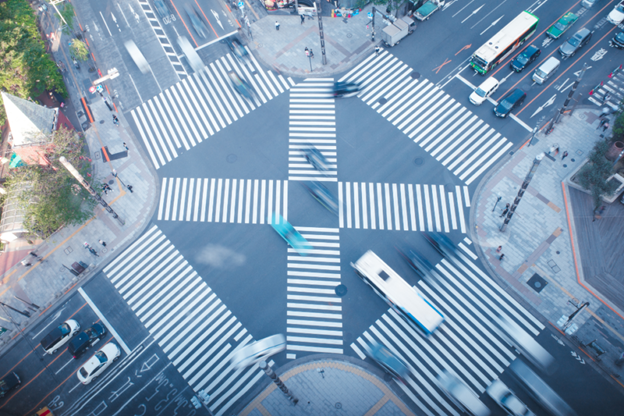Intersection Crashes: Causes, Consequences, and Prevention
Share
Share

Intersection crashes are a significant concern on our roads, contributing to a substantial number of traffic accidents and fatalities every year. In fact, every year, almost one–quarter of all traffic fatalities and nearly half of all injuries at road traffic accidents in the USA occur at intersections.
These crashes often lead to severe injuries, emotional or psychological distress, and financial burdens for the victims involved. Understanding the causes and consequences of intersection crashes is crucial for implementing effective prevention strategies. Suppose you are involved in such an accident. In that case, knowing how to seek compensation for your injuries and losses is essential to ensuring that you receive the necessary support during your recovery.
This article delves into the common causes of intersection crashes, the consequences, and practical measures to prevent these incidents, aiming to enhance road safety for all users.
Common Causes of Intersection Crashes
Intersection crashes result from various factors, many of which are preventable. Driver behavior is a significant contributor, with studies showing that approximately 44% of intersection accidents are results from drivers failing to yield the right of way.
Distracted driving, like sending a text or calling while driving, accounts for 25% of these crashes. Speeding and aggressive driving also play crucial roles, with the NHTSA reporting that speeding is involved in nearly 29% of all traffic fatalities.
Consequences of Intersection Crashes
The consequences of intersection crashes can be severe, impacting victims’ physical, emotional, and financial well-being. According to accurate statistics from the Insurance Institute for Highway Safety, intersection crashes result in approximately 2.5 million injuries annually in the United States. These injuries range from small cuts and bruises to more serious, life-altering conditions such as traumatic brain injuries, spinal cord damage, and fractures.
Emotional trauma is another significant consequence, often requiring long-term psychological support. Financially, victims may face hefty medical bills, rehabilitation costs, and loss of income due to time off work. Legal processes to seek compensation for injuries and losses can help alleviate some of these financial burdens, but the overall impact remains substantial.
Prevention Strategies
Executing effective prevention strategies can significantly reduce the incidence of intersection crashes. Enhanced driver education and strict enforcement of traffic laws by law enforcement are fundamental steps. Public awareness campaigns focusing on the risks of diverted driving and the importance of obeying traffic signals can help change driver behavior.
Infrastructure improvements play a vital role in our efforts to reduce intersection crashes. According to the Federal Highway Administration (FHWA), installing roundabouts has been shown to reduce intersection crashes by 75%.
Improved signage, better lighting, and advanced traffic signal systems that adjust to traffic flow can further enhance safety. These measures, combined with our commitment to safe driving, offer hope for a future with fewer intersection crashes.
Technological Advancements
Advancements in vehicle technology offer promising solutions for preventing intersection crashes. The IIHS reports that vehicles with automatic emergency braking (AEB) and forward-collision warning systems can reduce front-to-rear crashes by 50%.
Implementing vehicle-to-infrastructure (V2I) communication systems, which allow vehicles to receive real-time information about traffic signals and road conditions, can also help drivers make safer decisions at intersections. These technological advancements inspire us to continue our efforts in reducing intersection crashes.
Legal Support and Compensation
For those involved in intersection crashes, seeking legal support is crucial. Experienced attorneys can assist in filing claims to seek compensation for your injuries and losses, ensuring that victims receive the financial support they need for recovery. This compensation/payment can cover medical expenses, lost wages, property damage, and pain and suffering.
Conclusion
Intersection crashes are a primary safety concern with significant causes and severe consequences. Addressing driver behavior, enhancing infrastructure, and leveraging technological advancements are critical to reducing these incidents.
Leave a Reply